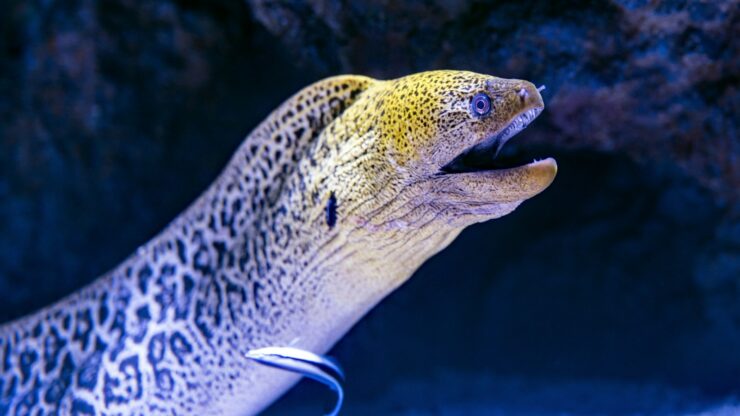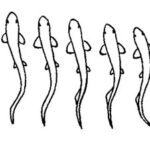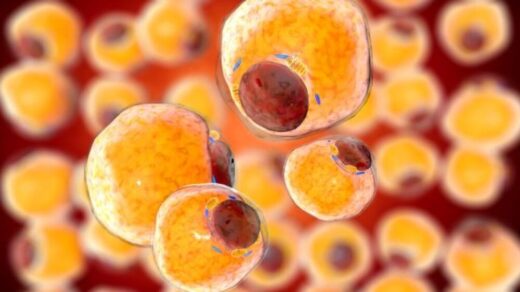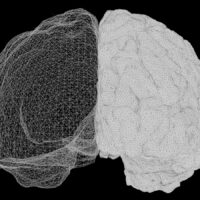Electric organs are made up of stacks of flattened cells known as electrocytes, arranged in regular columns along the sides of certain fishes. These organs allow some fish to produce electric discharges, either for navigation, communication, or stunning prey.
Historical Perspective
Back in the 1770s, the electric organs of species like the torpedo ray and electric eel drew the attention of scientists such as John Hunter, Hugh Williamson, and John Walsh, who published their findings in the Royal Society journals. These early discoveries significantly influenced the thinking of Luigi Galvani and Alessandro Volta, the pioneers behind electrophysiology and electrochemistry.
In the 19th century, Charles Darwin mentioned electric organs in On the Origin of Species, suggesting they were a strong example of convergent evolution. He observed that if these organs were inherited from a common ancestor, we would expect all electric fish to be closely related. Instead, he proposed that natural selection could have independently shaped similar organs in unrelated species—just as different inventors might arrive at the same invention independently.
Modern Studies
Electric organs have received significant attention in modern times. Notably, Hans Lissmann contributed critical research in the 1950s, exploring their sensory and evolutionary roles. In 1982, Noda et al. sequenced the acetylcholine receptor using electrocytes from Torpedo californica. Two years later, the same group sequenced the voltagegated sodium channel using electrocytes from Electrophorus electricus (electric eel).
Evolution and Gene Function
Electric organs have evolved at least six separate times in different groups of teleost and elasmobranch fishes. This includes a striking example of convergence in African Mormyridae and South American Gymnotidae, which evolved independently after the breakup of the supercontinent Gondwana. A wholegenome duplication in the teleost lineage allowed the Scn4aa sodium channel gene to develop a novel role in electric discharge.
While earlier work suggested these organs evolved via identical genetic mechanisms, newer genomic comparisons—such as Liu (2019)—reveal a more nuanced pattern. Although the entire transcriptomes differ, several gene expression pathways show convergence at the level of function. In other words, though different genes may be involved, they control similar biological tasks, supporting the theory that conserved functions—rather than identical genes—drive the convergence of these complex structures.
Interestingly, in all known clades except Apteronotus (a South American knifefish), electrocytes originate from skeletal muscle. In Apteronotus, these cells are derived from neural tissue. In Synodontis, a genus of African freshwater catfish, electric organs appear to have evolved from muscle tissue previously used for sound production, giving insight into their potential evolutionary origins.
Electrocytes: Structure and Function
Electrocytes (also called electroplaques or electroplaxes) are the functional units in electric organs. These cells may appear disklike or elongated, depending on the species. In electric eels, several thousand electrocytes are stacked, with each producing roughly 0.15 volts. The cells operate by actively pumping sodium and potassium ions out using ATP-powered ion transporters.
Although they are derived from muscle, electrocytes do not contract. They lack the machinery for contraction and are much larger than typical muscle cells. Despite this, they maintain nicotinic acetylcholine receptors and fire similarly to muscle cells, with voltage-gated sodium channels responsible for generating action potentials. Because of their stacked arrangement, the cells can discharge simultaneously, creating a large voltage output.
The structure of electric organs has been compared to a voltaic pile (the first battery). In terms of operation, though, they are more like a Marx generator: the electrocytes are charged in parallel but discharged almost instantaneously in series, producing a powerful electric pulse.
Firing and Control
The electric eel controls discharge timing using a special brain center called the pacemaker nucleus, made up of pacemaker neurons. When it senses prey, the pacemaker neurons fire, stimulating electromotor neurons to release acetylcholine onto the electrocytes. In complex electric organs, the electrocytes may have sodium channels on both sides. When one side depolarizes, the wave can trigger the other, leading to a fullbody discharge.
Mechanism of Prey Capture
In his 2014 Science paper, Kenneth Catania demonstrated how electric eels use this system to hunt. While swimming, the eel constantly emits lowvoltage pulses. Occasionally, it sends out 2–3 highvoltage pulses. If a nearby fish twitches in response, it reveals its presence.
Within 20–40 milliseconds, the eel fires a rapid volley (up to 400 pulses/second) of highvoltage discharges, stunning the prey. Interestingly, this response is triggered by the prey’s own motor neurons:
The effect remains even when the prey’s brain and spinal cord are destroyed, ruling out a central reflex.\n2. The reaction is blocked by curare, which inhibits neuromuscular transmission.
Thus, electric eels ask the question with a quick burst: “Are you alive?” If the prey answers with a twitch, it is instantly stunned and swallowed.
REFERENCES
- Fish and Fisheries – B. N. Yadav
- A Textbook of Fish Biology and Fisheries – S. S. Khanna & H. R. Singh
- Introduction to Fishery Science – B. K. Tiwari & S. C. Pathak





















1 Response
[…] Electric organs in fishes | NOTES […]